Just imagine coming off a long trail only to spend hours on end trying to start a fire. By the time you’re done, it’s already nightfall, and you’re shivering your bones off, trying to keep warm.
That’s why creating your homemade fire starters are essential. These not only alleviate the unnecessary stress and effort of starting a fire but also gives you more time to relax and unwind by a toasty campfire…or maybe even cook your food before evening sets in.
So, before you go off on your DIY journey, here are a few effective methods you can use to create perfect homemade fire starters for a variety of different outdoor and fire lighting situations. And the best part? Most of them are entirely non-toxic, environmentally friendly, and great for cooking outdoors!
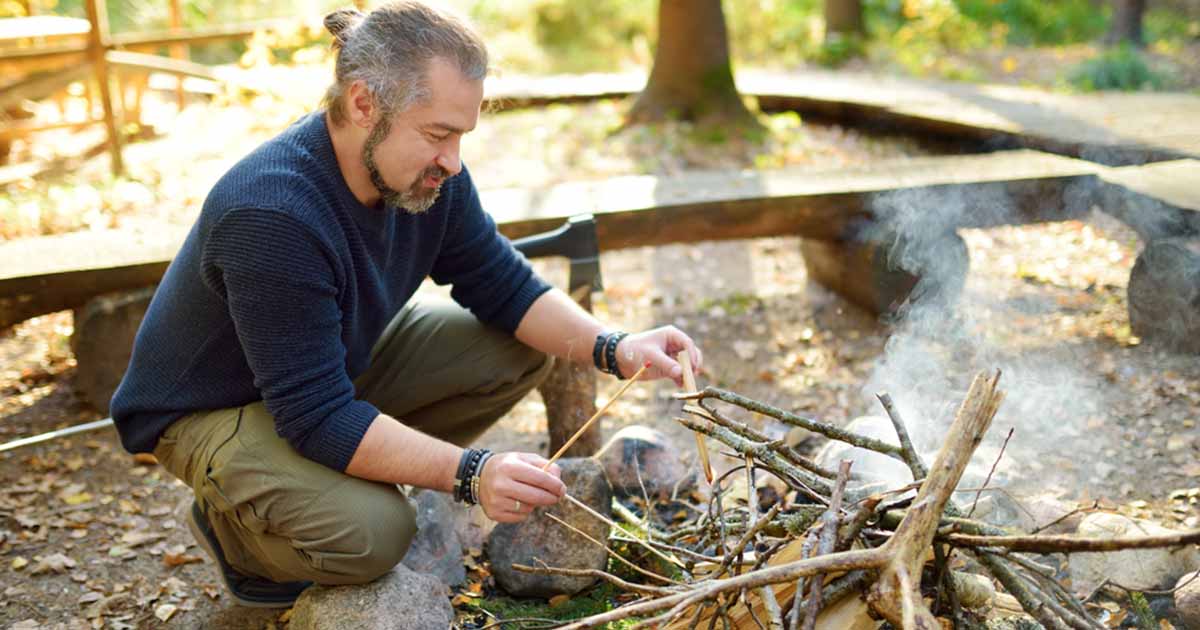
Wax Based Fire Starters
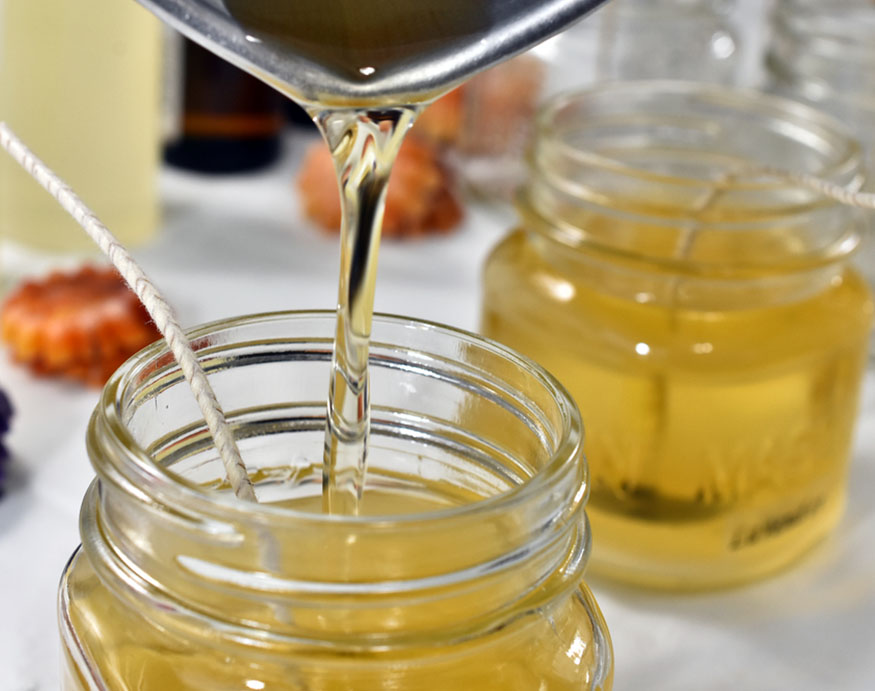
By far, the most effective ingredient for a DIY fire starter is wax because it contains one of the three essential ingredients needed to start combustion: oxygen. When the wax is melted down, its top surface releases oxygen. This, coupled with the wax’s wide surface, will ensure that your fire will start and keep going even in windy or humid environmental conditions.
But, there are two things you’ll need to do to ensure that your wax is ready. First, you have to determine which kind of wax you’ll use. You can choose from:
- Paraffin – The budget-friendly option. It is used in standard candles you see in the market. While the cheapest option, it does possess some toxic fumes that may be harmful if inhaled frequently.
- Soy – The middle ground option. It is made from soybeans and makes for an effective fire starter, and you can mix it with a blend of scents. It comes with a bit of paraffin to keep it cheap, so you may want to watch out for this.
- Beeswax – The natural option. If you’re environmentally conscious, then beeswax is a great alternative. Although, while it’s completely organic, the price may be too hefty for some.
While these are all effective firestarters, you can reduce the total cost by using leftover wax from candles you already have in your home.
The second thing you need to do is simply melt the wax. One of the best ways to melt wax without risking burning your home or wrecking your stovetop is by placing some wax inside a tin can or other heat resistant containers and follow the steps below:
- Heat a large pot of water and place the tin can inside.
- Let it heat up until the wax inside the tin can has melted. If you’re worried, yes, it’s entirely normal for the tin can to float. Just make sure to keep it upright using tongs or gloves.
- Once the wax is melted, you have to act swiftly to use or pour the wax immediately. And, as always, remember to use gloves or tongs to remove the tin can from the pot to avoid burning your hands.
Jute twine soaked in wax
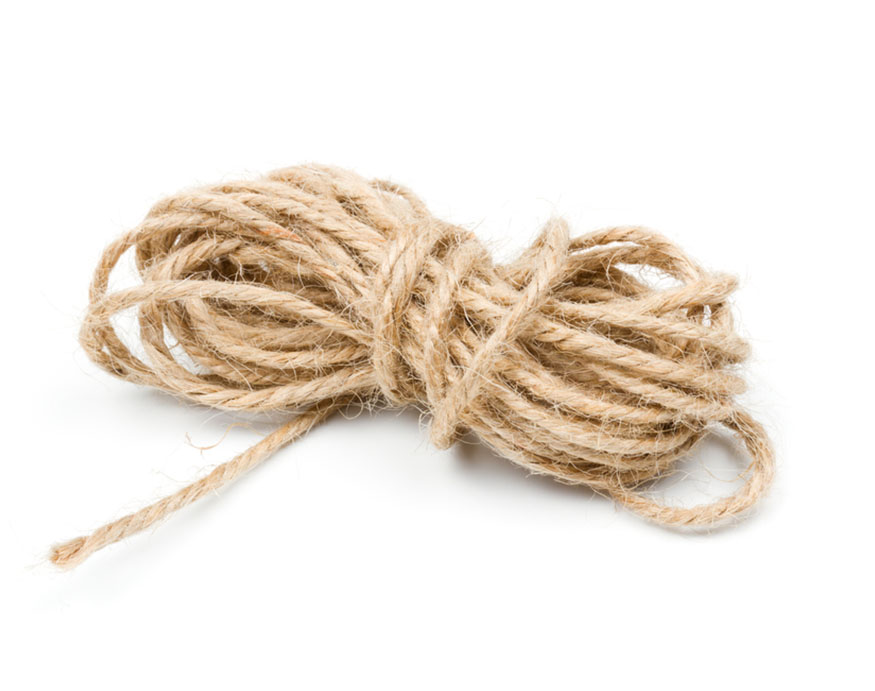
Jute twine isn’t only for crafts! When soaked in wax, it makes for a very effective and lightweight fire started when prepared right. And it takes minimal effort to create. But, if you’re feeling a little more adventurous, braiding the twine can be very helpful in terms of creating more surface and longevity for your firestarter.
What you need to prepare:
- Twine (preferably braided ones – you can also opt to braid them yourself)
- Melted wax
- Ziplock or airtight container
- Tongs or tweezers
Directions
- Dip the jute twine (braided or unbraided) into the newly melted wax using tongs and let it settle for a couple of seconds.
- Remove it from the wax, gently shake off any excess wax, and place them in airtight containers or ziplock.
- Simply light the tip of the twine with a match or lighter and get ready to stay warm by a cozy fire.
These are great alternatives for those who love to pack light. They actually might be the most lightweight option you can have as they take up minimal space and weigh next to nothing.
Dryer Lint, Egg carton, and wax
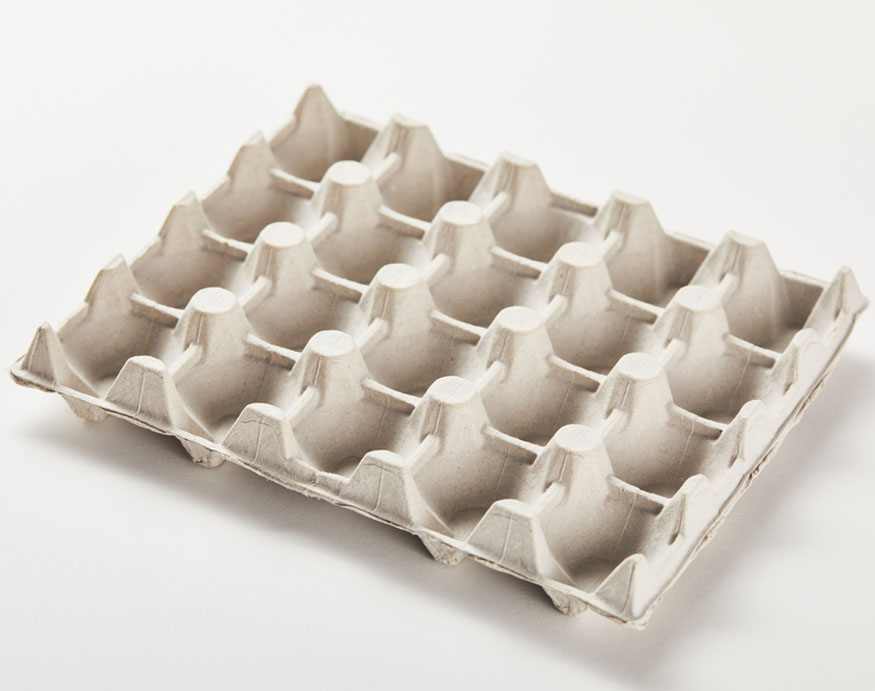
If you’re not up to buying extra materials, then look no further. Dryer lint and egg cartons might just be your saving grace. One tip though, make sure to start saving up dryer lint today!
What you need to prepare:
- Accumulated dryer lint
- Empty egg carton (use paper ones as these are the most flammable options)
- Newly melted wax
- Fork or stick
- Ziplock or airtight container
Directions
- Take an empty egg carton and pack in lint from your laundry dryer into each cup. Make sure the lint is packed loose and not crammed in.
- Take your melted wax and pour it into each cup of lint until they are completely saturated. Use a fork or stick to help the wax penetrate all the way through.
- Leave them to dry and then individually cut up the egg cups and store them in an airtight container or ziplock for storage.
These found materials are not only great for creating home fire starters, but they also cost nothing to make and could even free up space in your home. And if you don’t have egg cartons lying around, you can also use paper cupcake containers as a substitute.
Self-igniting fire starter
Ok, let’s say in the off chance you forgot to pack a lighter or matches. What are you supposed to do then? Well, luckily, this excellent DIY fire starter is all you need to start that fire in no time. Just make sure to keep these in your outdoor emergency kit at all times.
What you need to prepare:
- Match sticks
- Tissue paper
- Newly melted wax
- Ziplock or airtight container
- Tongs or tweezers
Directions
- Wrap a few lengths of tissue paper around a match, making sure that you keep the striking end unwrapped.
- Dip the wrapped match into your melted wax and then leave to dry out on a rack or newspapers.
- When you’re ready to start a fire, simply remove the wax from the striking end of the match and then strike it to light a fire.
This nifty self-igniting fire starter should be a staple in all outdoor kits – the ease and practicality of it speak for itself!
Sawdust cupcakes
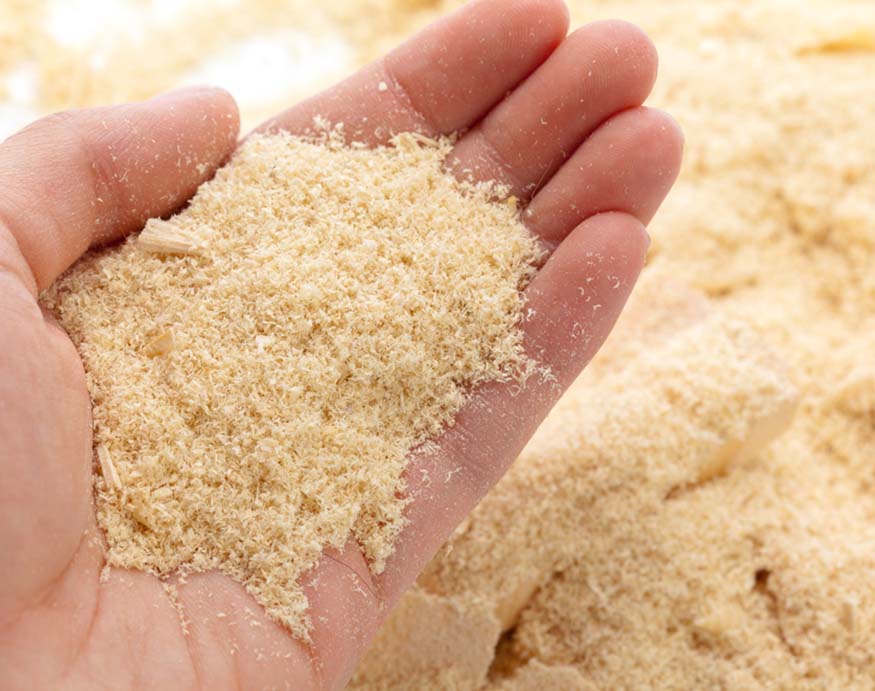
If you’re looking for a little DIY fun with your kids, this fun homemade firestarter is a great way to introduce them to crafts and prepare them for outdoor trips. And, the best part? They’re super easy to make.
What you need to prepare:
- Sawdust or wood chips
- Cupcake containers (paper ones are the best way to go)
- Newly melted wax
- Ziplock or airtight container
Directions
- Prepare a few cupcake containers and place a spoonful of sawdust or wood chips into each container.
- Pour your melted wax over the sawdust and let it set.
Try this creative experiment with your kids and create a fun bonding experience while teaching them a cool survival trick they can share with their friends!
Cotton pads soaked in wax
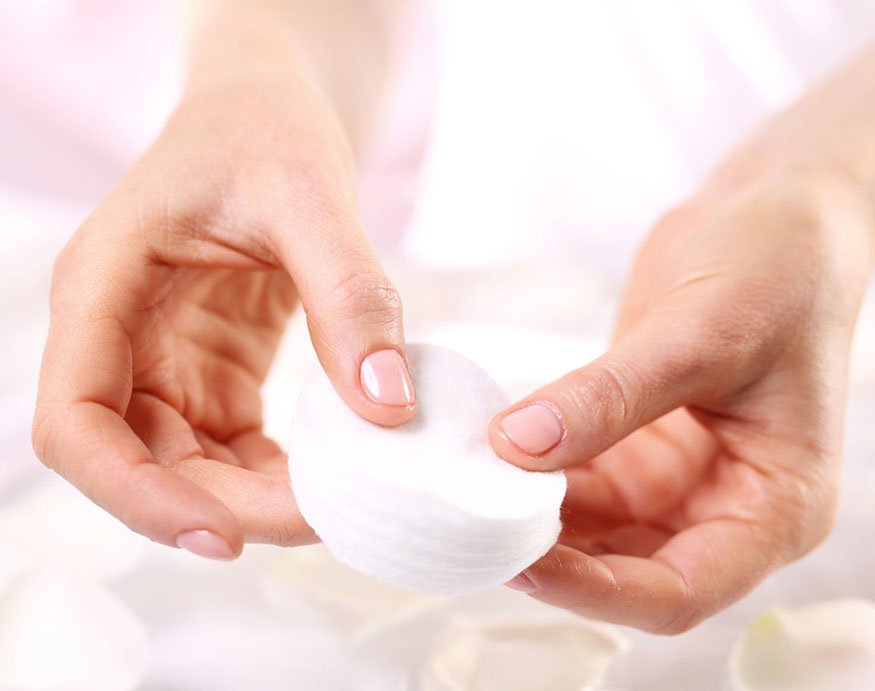
OK, so maybe you don’t have extra egg cartons or cupcake containers lying around. Well, what if we told you cotton pads could work just as effectively?
What you need to prepare:
- Cotton pads
- Newly melted wax
- Ziplock or airtight container
- Tongs or tweezers
- Newspapers or tray for drying out and cooling
Directions
- Simply dip a few cotton pads into your melted wax, making sure they’re completely saturated.
- Use tweezers or tongs to remove the pads out of the wax.
- Let them dry out on a tray or newspaper.
Quick, easy, and simple – what else could you ask for? Oh, and did we also mention cheap?
Shredded paper cupcakes
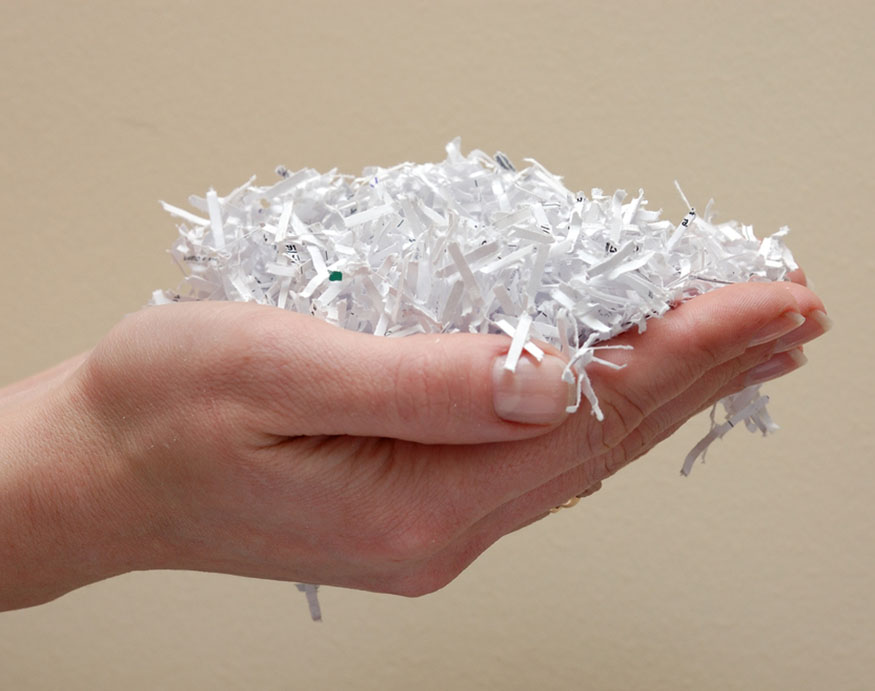
While sawdust cupcakes are a go-to for most, not everyone has sawdust or wood chips lying around. That’s why we also included a substitute and a very easily found one at that. Paper!
What you need to prepare:
- Scissors
- Recycled paper or cards
- Cupcake containers
- Newly melted wax
- Ziplock or airtight container
- Dried orange peels or melted crayon wax (optional)
Directions
- Shred recycled paper or cards into thin strips using scissors or cutters.
- Place the shredded strips into your cupcake containers.
- Pour your melted wax onto each container.
- And as an added tip, you can add in dried orange or lemon peels for that extra citrusy scent or even melted crayons to give it that pop of color.
Not only is this effective at starting fires, but they’re also environmentally friendly as you’re using recycled papers or cards – unless, of course, you want to use fresh ones. But who would?
Alternative Homemade Fire Starters
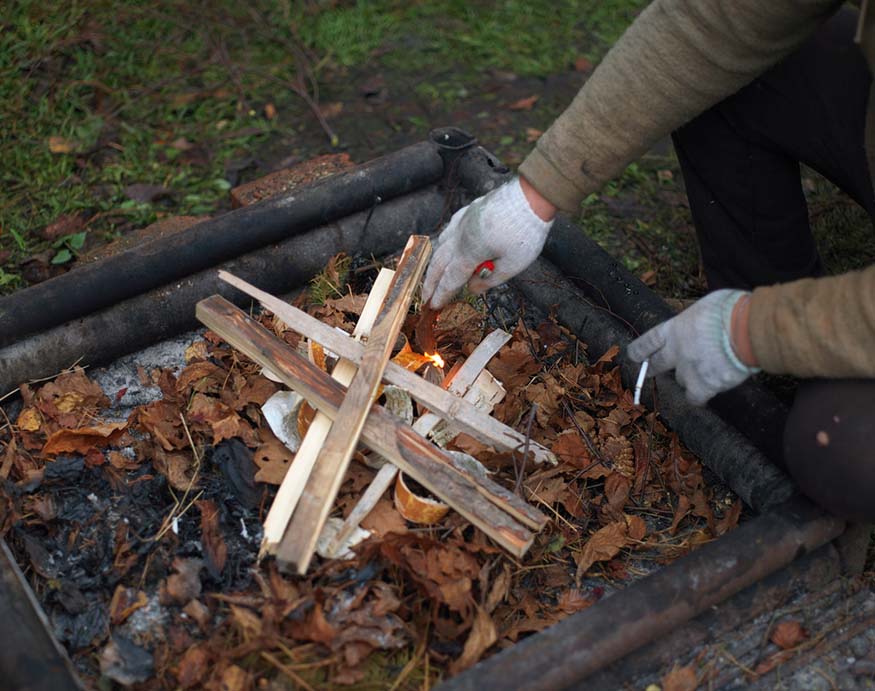
Wax isn’t the only arsenal at your disposal for fire starting. There are also a variety of recycled and store-bought products you can use to create homemade firestarters. And, you don’t have to deal with heating wax and risk burning your home!
Soaked corks
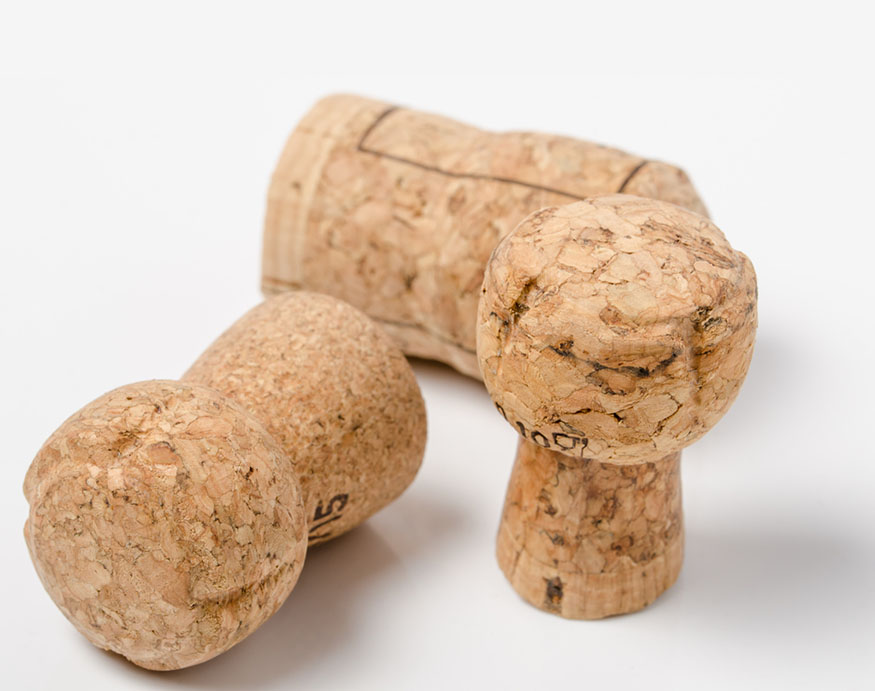
How many times have you thrown away corks after opening wine bottles? Well, now is the time to save them up! These nifty stoppers can be a great way to light campfires or even fire pits in your backyard.
What you need to prepare:
- Corks
- Rubbing Alcohol
- Jar with a leak-proof lid
Directions
- Take an old jar with a lid that seals tightly. Fill it halfway through with rubbing alcohol.
- Place the corks in the alcohol-filled jar and leave them to soak.
- Simply remove the cork from the jar when you need to light a fire and get ready for some flames!
While these are great alternatives for non-wax fire starters, you must place them in a jar that seals very tightly. After all, you don’t want anything spilling in your backpack when you’re already focusing on your trail.
Greasy chips

Who knew potato chips could be the perfect way to create a fire? While a little absurd, to say the least, this method is tested and proven and can make for a great conversation starter. Just imagine pulling out a bag of chips to light a fire in front of your hiking buddies!
What you need to prepare:
- A bag of chips (look for the most fat-saturated ones), and that’s it!
Directions
- Select the greasiest and most fat-saturated chips you can find.
- Place a pile in the center of your fire pit or campfire and light it up
- These will quickly burn for about 3-4 minutes, giving you ample time to fan out flames and get your fire started
And, it wouldn’t hurt to have a few chips as well while waiting for your fire to start. After all, refueling your energy with calorie-dense snacks is just as important when you’re hiking through a rough trail.
Wooden coffee stirrers
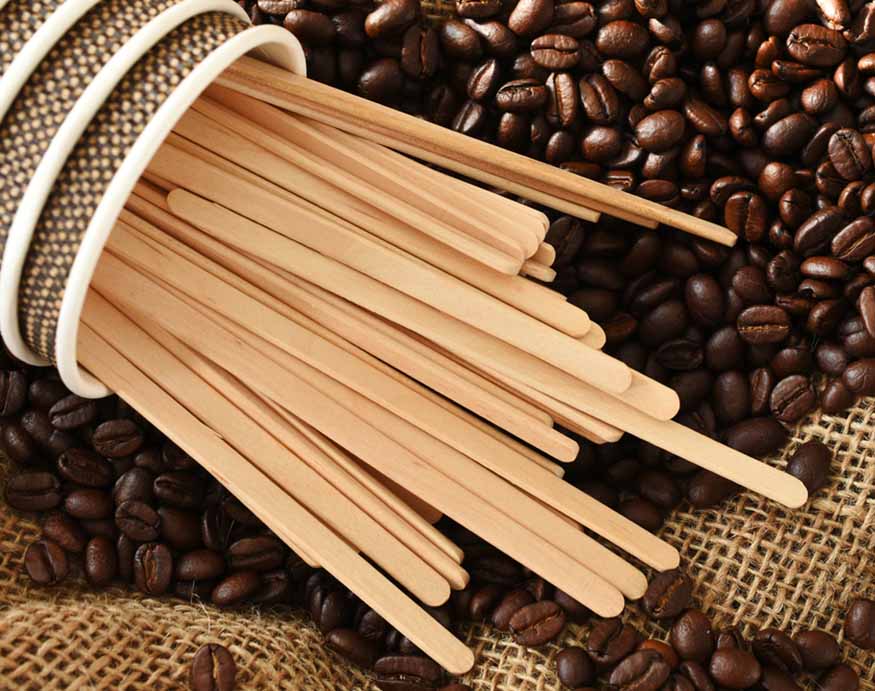
While having firewood ready is essential to starting a fire, sometimes it’s just not accessible. But, when in doubt, it’s always good to look through your cupboards for some suitable old wooden coffee stirrers. Not only are they lightweight and thin, but they also ignite fast and could make an excellent staple for your outdoor emergency kit. Just make sure they’re stored dry because they burn best when completely dried. When damp, you may have to lay them out to dry and wait a few minutes.
Bug spray
OK, to be on the safe side, please use this method with caution. Bug sprays, while essential for most outdoor trips, actually contain highly flammable propellants. In fact, there have been studies leading to numerous house fires caused by pesticide aerosol products. But, if you have nothing else available, then these handy bug sprays can create fires faster than wax or alcohol. Just make sure to keep yourself at a distance and proceed with extreme caution when using these.
Rubber bike inner tube
For all bike-lovers out there, packing a spare inner tube could just be what you need to start a fire almost anywhere. These lightweight tubes can easily be stored in your backpack and burn great for a few minutes – enough to get your fire started and going. Simply, just puncture holes into the tube or cut it into strips for a more efficient fire starting.
But, there’s one problem with this method. It stinks. Like really bad. And could potentially be toxic. So, make sure you stay upwind when using this method. Also, it might be a good idea to use this for emergency purposes only and not as your go-to fire starter.
Cotton wool dipped in vaseline
If you’re a seasoned backpacker, you already probably have cotton and vaseline in your first aid kit. But did you know that, in a pinch, these two items might serve more than just first aid? Combining these two items can make for a fantastic firestarter, and it doesn’t take too much effort to do. When crafting, simply saturate the cotton balls with vaseline and store them in a ziplock bag.
As an added tip, try melting the vaseline before dipping the cotton ball and then compress the saturated cotton ball into the size of a mini hockey puck. Let it dry, and voila, you have a waterproof fire starter that will burn almost forever!
Hand sanitizer (with alcohol)
Accelerate your fire with a few pumps of hand sanitizer. Just make sure these are alcohol-based to keep your fire starting and going. Simply spread a couple of blobs onto your kindling and make even slightly damp firewood easy to kindle!
Duct tape
What’s one thing most people have in their DIY tool kit? Duct tape, of course! This sealant can easily act as an accelerant for your fire starting. Just cut it into long strips, place one end of the strip onto your kindling, and light the other end.
Fire Starters In Nature
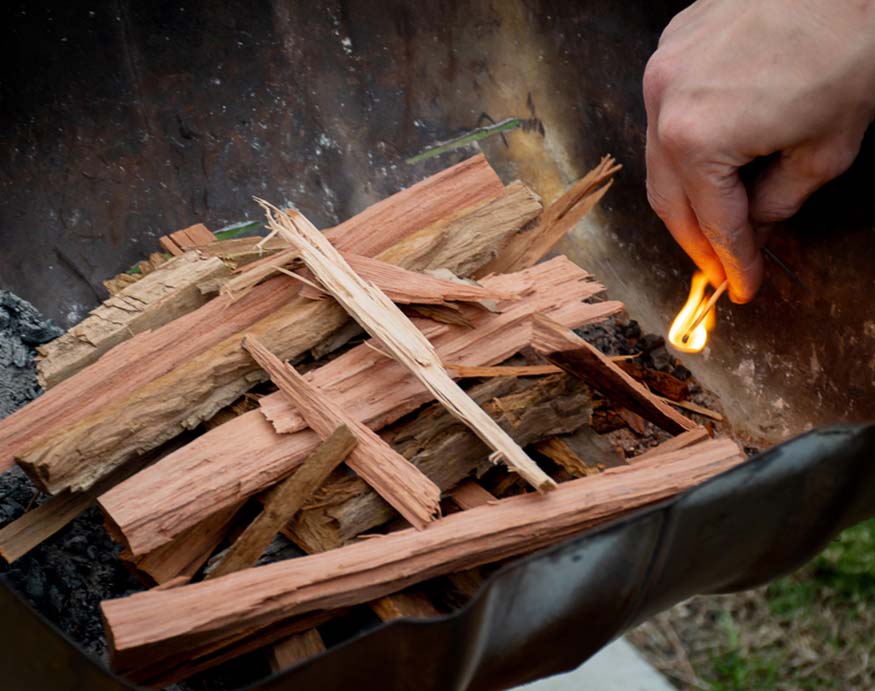
Taking the environmentally-friendly route is always an excellent way for any outdoor backpacker. Not only do they help save the environment, but they can also be found in nature, meaning all you have to do is look!
Dried orange peel
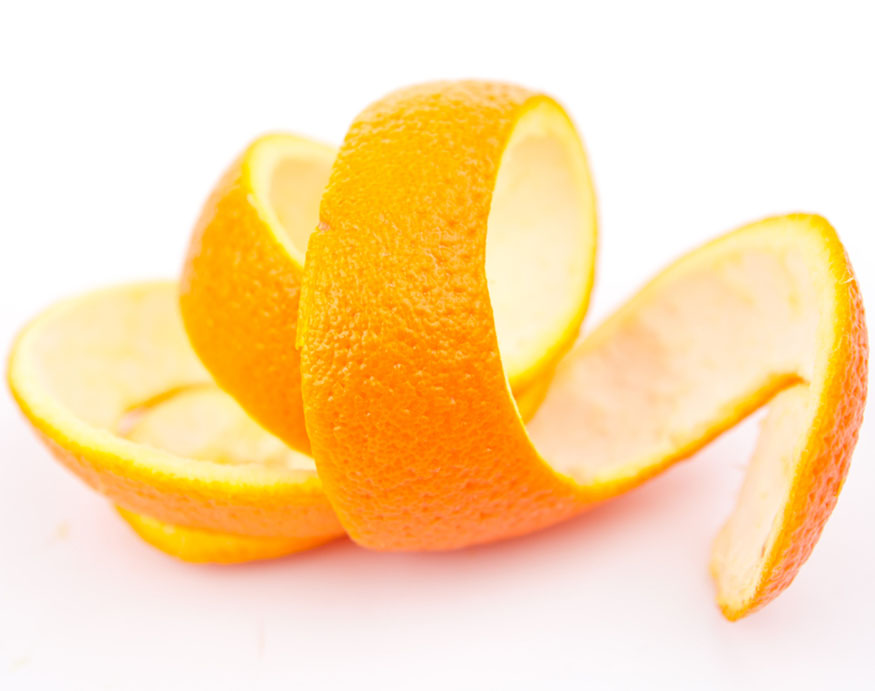
Let’s be honest. The smell of burning wood is not everyone’s cup of tea. That’s why adding a few dried orange peels are perfect for adding that calming fragrance to your indoor fire inserts! Dried orange peels not only add an aromatic touch but also act as very efficient fire accelerants. The peels contain a natural oil called limonene that is highly flammable and burn long enough to ignite even your slightly damp kindles.
To dry your orange peels, simply leave them to dry out completely under the sun or bake them in your oven for a few minutes. You can also keep these in an airtight container or ziplock to bring with you on your next outdoor adventure. These will ignite almost instantly when in contact with fire while diffusing a sweet-smelling fragrance that’s perfect for alleviating stress and fatigue after a long and challenging trail.
Pine cone fire starters
Pine cones are not just decorating! These natural decorative pieces are also great for starting fires and smell amazing when they’re being burned. As a tip, make sure that they’re completely dry before throwing them into your kindles.
To further maximize their fire accelerant properties, you can soak them in used cooking oil and leave them out to dry before placing them in your fire pit or campfires. You may also use wax by dipping them into the melted wax and leaving them out to dry.
Tree resin
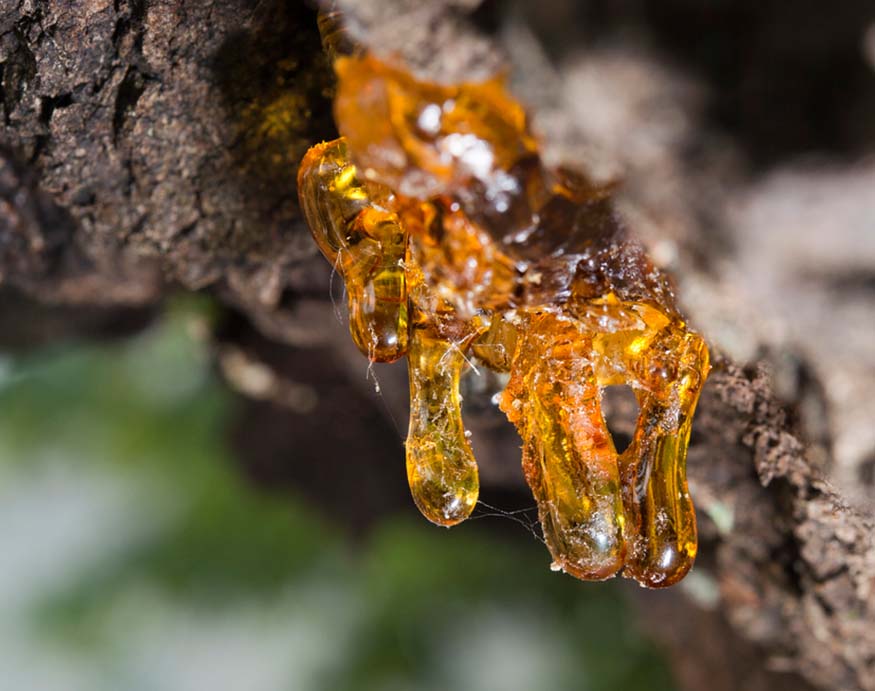
Sometimes, honing your resourcefulness is the best way to be prepared. For example, when you’re outdoors and lacking matches, lighters, or even any fire starting tools, knowing that tree resin is excellent flammable materials could be the thing that saves you from shivering your way through the night!
Conifer trees provide the best flammable resin, but if you can find a pine tree, then even better! You can combine the resin and the pine cones to start a fire. Although, it is good to point out that these are only accelerants, and you still need to ignite a fire one way or the other. So, it is highly recommended to have at least one of the fire starters mentioned above in your emergency kit always – unless, of course, you know how to start a fire the good old-fashioned way with a stick, a branch, and some leaves.
Conclusion
Whether you’re an outdoorsy person or a homebody, knowing how to start a fire in any scenario is essential. You never know when an occasion may arise that you may need fire. After all, it’s not only hiking or camping that we may need to start a fire. You can also apply the methods above to your backyard fire pits, fire inserts, and even BBQ grills!
That’s why it is best to try out these different methods and see which ones work the best for you. Or maybe, even combine a few to make sure you’re fully prepared whenever the call of fire beckons.